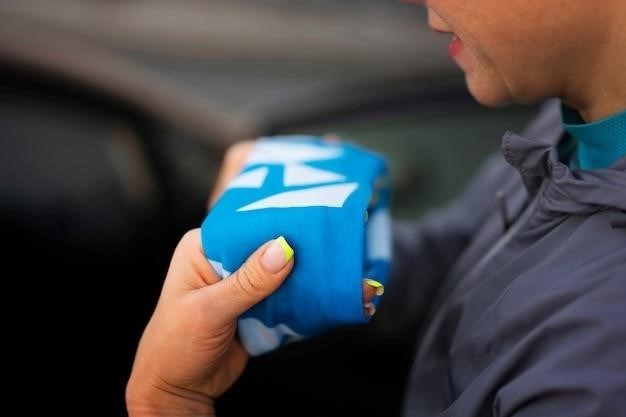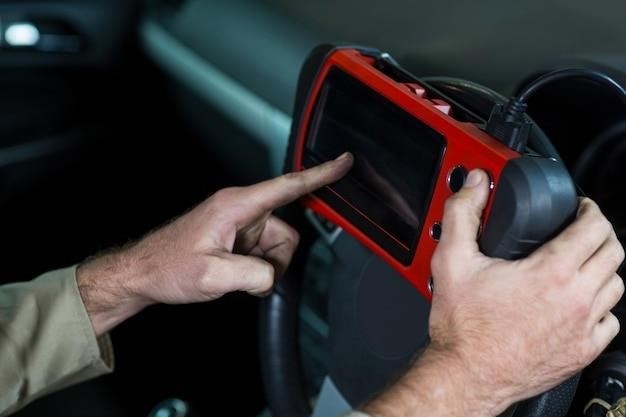
tekonsha brake controller user manual
Tekonsha Brake Controller User Manual⁚ A Comprehensive Guide
This comprehensive guide provides detailed information on Tekonsha brake controllers, covering installation, setup, troubleshooting, and maintenance. It serves as a valuable resource for users of Tekonsha brake controllers, ensuring safe and efficient towing experiences.

Introduction
Tekonsha brake controllers are essential components for safe and efficient towing. They allow you to control the brakes on your trailer, ensuring smooth and controlled stops. This user manual will guide you through the installation, setup, and operation of your Tekonsha brake controller. From mounting and wiring to adjusting sensitivity and troubleshooting, this manual provides detailed instructions and helpful tips. Whether you are a seasoned tow enthusiast or a first-time user, this comprehensive guide will equip you with the knowledge and confidence to use your Tekonsha brake controller effectively.
Features and Benefits
Tekonsha brake controllers offer a range of features and benefits that enhance towing safety and convenience. These controllers utilize proportional braking technology, which adjusts braking force based on the deceleration of the tow vehicle. This ensures smooth and controlled stops for both the tow vehicle and the trailer. Tekonsha brake controllers feature user-friendly interfaces, allowing for easy adjustment of sensitivity and power output. Many models also include advanced features such as a built-in boost function, which provides extra braking power when needed. Additionally, Tekonsha brake controllers are designed for durability and reliability, ensuring long-lasting performance.
Installation Guide
Installing a Tekonsha brake controller requires careful attention to wiring and mounting. The installation process typically involves connecting the brake controller to the vehicle’s brake light switch, battery, and trailer connector. Refer to the specific installation instructions for your Tekonsha brake controller model for detailed wiring diagrams and procedures. Ensure that the brake controller is mounted securely in a location that is easily accessible to the driver and provides a clear view of the display. The installation process may vary depending on the vehicle and brake controller model, so it is essential to follow the manufacturer’s instructions carefully.
Mounting the Brake Controller
Mounting the Tekonsha brake controller is crucial for optimal functionality and driver convenience. The controller should be placed in a location where the display is easily visible and the buttons are within reach. Tekonsha brake controllers typically come with mounting brackets and hardware for secure installation. Consider factors like the vehicle’s interior layout, driver’s line of sight, and accessibility when selecting the mounting location. Ensure that the mounting surface is solid and stable to prevent vibrations and potential damage to the controller. Consult the manufacturer’s instructions for specific mounting recommendations and guidelines.
Wiring the Brake Controller
Wiring the Tekonsha brake controller requires careful attention to detail and adherence to the manufacturer’s instructions. The controller typically comes with a wiring harness that connects to the vehicle’s brake light switch, battery, and trailer connector. The wiring process involves connecting the appropriate wires from the harness to the corresponding terminals on the vehicle and trailer. Ensure that the connections are secure and properly insulated to prevent short circuits or electrical issues. It’s recommended to use a multimeter to test the connections and ensure proper continuity and polarity. If you are unfamiliar with electrical wiring, it’s best to consult a qualified technician for assistance. Properly wired connections are essential for the brake controller’s functionality and safety.
Setting Up the Brake Controller
Setting up a Tekonsha brake controller involves adjusting the power output and sensitivity to match the specific trailer and towing conditions. The power output controls the amount of braking force applied to the trailer, while the sensitivity determines how quickly the controller reacts to the tow vehicle’s braking. These adjustments are typically made using knobs or buttons on the controller. Start with the power output at a low setting and gradually increase it until the desired braking force is achieved. Adjust the sensitivity to ensure smooth and consistent braking without locking up the trailer’s brakes. The manual override feature allows for manual application of braking force, which can be used for situations where additional braking is needed. It’s important to test the brake controller in a safe and controlled environment before towing a trailer on the road.
Adjusting the Power Output
The power output setting determines how much braking force is applied to the trailer. Adjusting the power output is essential for achieving safe and efficient braking. Too little power can result in insufficient braking, while too much power can cause the trailer brakes to lock up. Start with the power output at a low setting and gradually increase it until the desired braking force is achieved. This adjustment is usually done using a knob or button on the brake controller. Test the braking force by driving the tow vehicle and trailer at a low speed and applying the brakes. If the trailer brakes lock up, reduce the power output. If the braking force is insufficient, increase the power output. Remember to adjust the power output based on the weight of the trailer, the type of trailer brakes, and road conditions.
Adjusting the Sensitivity
The sensitivity setting determines how quickly the brake controller responds to braking input. A higher sensitivity setting will result in a quicker brake response, while a lower sensitivity setting will result in a slower response. Adjusting the sensitivity is crucial for achieving smooth and controlled braking. Start with the sensitivity setting at a low level and gradually increase it until the desired braking response is achieved. Test the braking response by driving the tow vehicle and trailer at a low speed and applying the brakes. If the braking response is too abrupt, decrease the sensitivity setting. If the braking response is too slow, increase the sensitivity setting. Remember to adjust the sensitivity setting based on the type of trailer brakes, the weight of the trailer, and road conditions.
Troubleshooting
If you encounter issues with your Tekonsha brake controller, it’s essential to troubleshoot the problem effectively. Start by checking the basic connections, ensuring all wires are securely connected to the brake controller, trailer, and tow vehicle. Inspect the fuses and circuit breakers to ensure they are not blown. If the brake controller is not powering on, check the battery connections and voltage. If the trailer brakes are not engaging, inspect the brake actuator and ensure it’s receiving power. Consider checking the trailer brake lights to diagnose potential issues. If you’re still unable to resolve the problem, consult the Tekonsha user manual or contact their technical support for further assistance. Remember to always disconnect the battery before working on electrical components.
Maintenance and Care
Regular maintenance is crucial to ensure your Tekonsha brake controller operates optimally and safely. Periodically inspect the brake controller for signs of wear or damage, such as loose connections, cracked housings, or corroded terminals. Clean the brake controller’s exterior with a damp cloth to remove dirt and debris. Avoid using harsh chemicals or abrasive cleaners. Ensure the mounting bracket is secure and the brake controller is properly aligned. If you notice any malfunctions or inconsistencies, consult the user manual or contact Tekonsha’s technical support for guidance. Following these simple maintenance practices will help prolong the life of your Tekonsha brake controller and ensure reliable performance.
Safety Precautions
Safety is paramount when using a Tekonsha brake controller. Always ensure the brake controller is properly installed and functioning correctly before towing. Never operate the brake controller with loose or damaged wiring. Avoid exposing the brake controller to extreme temperatures, moisture, or direct sunlight. Never attempt to modify or repair the brake controller yourself, as this could compromise its safety and performance. Regularly inspect the trailer brake system for any signs of wear or damage. Always maintain a safe distance from other vehicles when towing. Be aware of your surroundings and adjust your driving speed accordingly. Remember, using a Tekonsha brake controller is a privilege, not a right, and it is your responsibility to use it safely and responsibly.
Warranty Information
Tekonsha brake controllers are covered by a limited warranty that protects against defects in materials and workmanship. The warranty period typically varies depending on the specific model and may range from one to three years. To obtain warranty service, contact Tekonsha directly or visit their website for information on authorized service centers. Keep your original purchase receipt and product registration information for warranty verification purposes. The warranty does not cover damage caused by misuse, neglect, accidents, or unauthorized modifications. For complete details and limitations on the warranty, refer to the Tekonsha brake controller user manual or contact Tekonsha customer service;
Contact Information
For any inquiries, technical support, or warranty claims related to your Tekonsha brake controller, you can reach out to Tekonsha through various channels. Their website, www.tekonsha.com, provides a wealth of resources, including product manuals, FAQs, and contact information. You can also call their customer service line at 1-888-785-5832 for immediate assistance. For warranty claims, it’s recommended to first consult the user manual or website for detailed instructions. Alternatively, you can contact an authorized service center located near you, which can be found on the Tekonsha website or by contacting their customer service team.